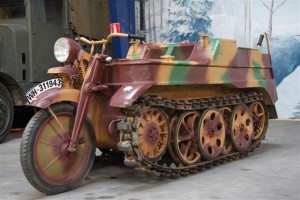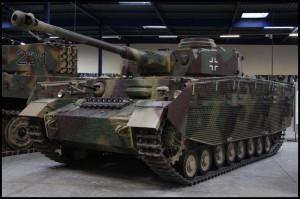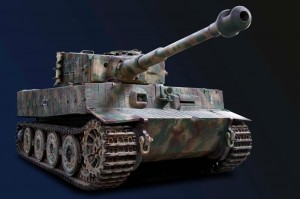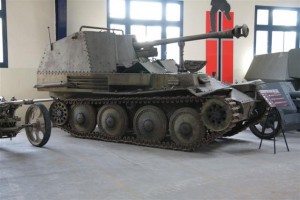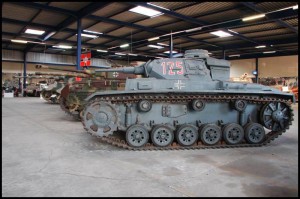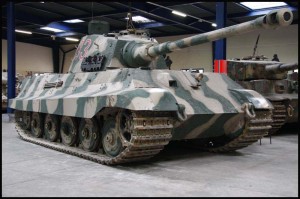German Room
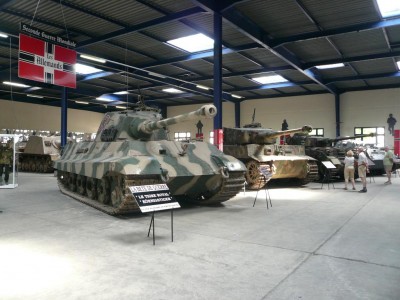
The 18 July 1918 in Villers-Cotterêts in the Aisne, 300 tanks Renault supported by 600 aircraft, routed nine German divisions. On the 8 August, on the Somme, six other divisions knew the same fate. This is the beginning of the end for the Imperial Army.On 2 October, a representative of the General Staff stated before the Reichtag: "There is no longer any possibility of defeating the enemy as a result of the appearance on the battlefields, of a decisive factor: the tank of assault ".
The Germans who built only 80 tracked casemates A7V during World War II, will not forget the lesson. They quickly circumvent the clauses of the Treaty of Versailles forbidding them to own tanks and planes. Using the facilities granted by the German-Soviet treaty, they developed their new materials in Russia. And the first Panzer I will be experienced during the Spanish War.
The 12 March 1938, General Guderian's blinds invade Austria, then Czechoslovakia on the 1er October. Eleven months later, 57 German divisions of which 10 armored regulate the fate of Poland in a few weeks. We also saw what happened to France in May 1940 ...
The first German tank, the Panzer I, if it appears very rudimentary, little weapon (two machine guns in turret) and badly armored (13 mm), is on the other hand of easy manufacture. It is the spearhead of the invasions of Austria, Czechoslovakia and Poland, and it is found in Belgium because it is the backbone of the divisions sent to attract the body of French Cavalry. It is already accompanied by Panzer II (20 mm gun) and Panzer III (37mm gun), whose shielding of 30 mm is not resistant to the piercing shells of the Somua S35. Illusion of superiority for the French, not knowing that the 1er Panzer IV available (75 mm gun, shielding of 50 mm), were preserved for the breakthrough of the Ardennes. And, there, the French tanks no longer make the weight ...
machinery
-
Kettenkrad
-
the Panzer IV
The Panzerkampfwagen IV (PzKpfw IV), often called Panzer IV was an assault tank used by Germany during the Second World War. Originally designed as a fire support tank, with a short 75 mm gun, for the Panzerkampfwagen III, it eventually replaced the latter when the allied tanks became too protected for it. Re-equipped with a long anti-tank gun, the ... -
The Tiger I Sd.Kfz.181 Ausf. E late
The "Tiger I" is the common name for a German heavy tank from World War II. The first official German designation was Panzerkampfwagen VI Ausführung H (abbreviated PzKpfw VI Ausf. H, Ausführung is the German term for "version"), but the tank was renamed Panzerkampfwagen VI Ausf. E in March 1943. The Tiger was in service from late 1942 until ... -
The Marders
During the summer of 1941, the German anti-tank gun PAK 50 proved to be quite ineffective against the Russian T34 appearing in large numbers. The Wehrmacht thus quickly needing a more powerful self-propelled artillery, the experiment is made to mount a Russian gun of 76,2 mm captured, on a chassis of Panzer II. The Marder thus created proved to be very effective and, from 1942, ... -
Panzer III
The Panzerkampfwagen III (PzKpfw III), often abbreviated to Panzer III, is a German tank, designed at the end of the 1930 years and used intensively during the first phase of the Second World War. It was developed to engage the enemy tanks, while the Panzer IV, which was contemporary to it, was planned to provide firing support to formations ... -
Tiger II

